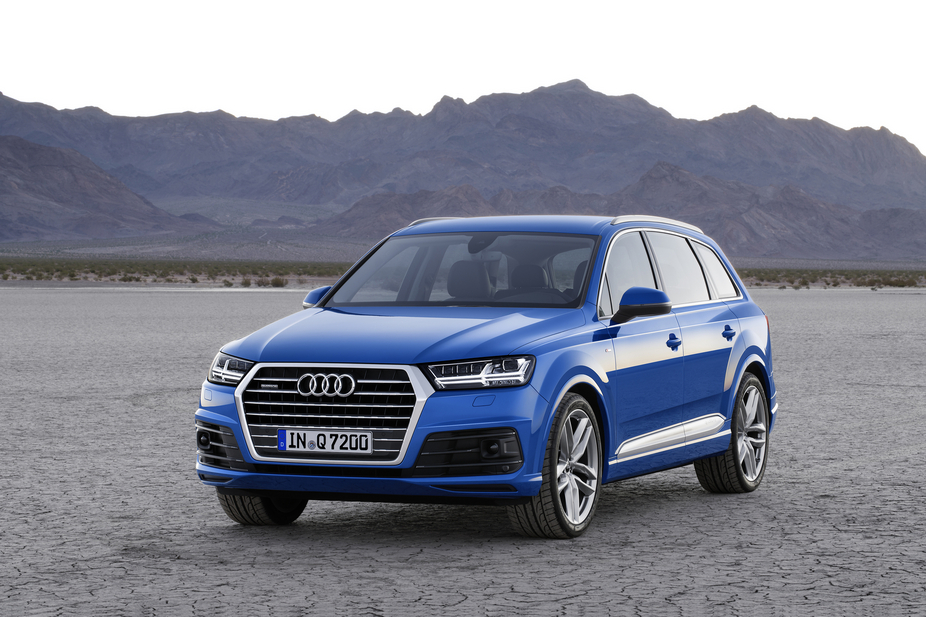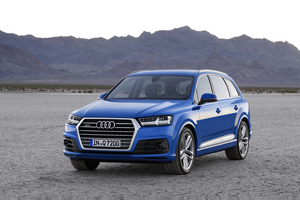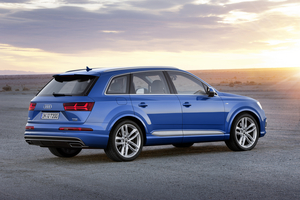|
Send this page to a friend! Fill in the form bellow | ||
news
Audi reveals second generation Q7
Official launch will take place in January at NAIAS
Audi AudiGermany, 1909 > present83 models
AudiGermany, 1909 > present83 models
8213 photos
27 videos
revealed the first images of the new generation of the Q7 that will make its international debut at NAIAS in Detroit next January. One of the big news is the substantial weight reduction compared to the previous model.
Dimensions and Platform
The second generation of the Q7 is based on a significantly reviewed version of the Audi MLB platform, the same that will be used for the successors of the Volkswagen Touareg Volkswagen TouaregGermany, 2002 > present2 series
Volkswagen TouaregGermany, 2002 > present2 series
73 versions
144 photos
, the Porsche Cayenne Porsche CayenneGermany, 2002 > present3 series
Porsche CayenneGermany, 2002 > present3 series
46 versions
158 photos
2 videos
, the future Bentley Falcon and a possible production version of the Lamborghini Urus Lamborghini UrusItaly, 2012 > present12 photos
Lamborghini UrusItaly, 2012 > present12 photos
.
The new seven-seat SUV is 5050mm long, 1970mm wide and 1740mm high, 370mm shorter, 15mm narrower compared to its predecessor. The wheelbase was shortened by 10mm to 2990mm.
However, despite the reduction of the external dimensions of the Audi Q7, the German brand indicates that the interior of the SUV offers more passenger accommodation capacity than the previous model.
According to Audi the improved packaging allowed an extra 21mm free space between the first and second row of seats. The third row also saw its space increase.
With the new Q7 Audi achieved a significant weight reduction. For example, the version equipped with the 3.0 V6 333hp petrol engine weighs 1970kg, 325kg less compared to the previous generation of the Q7.
The weight cut was made possible by a detailed program of weight reduction that cut 100kg from the suspension and 71kg from the body. The German brand also managed to save 24kg only with the introduction of aluminum doors.
The new electrical architecture and improvements at the vehicle's floorplan, with greater use of high-strength steel and aluminum, also helped the weight reduction
Design
Scheduled for release in mid 2015, the new Q7 receives the latest design developments in Q models, with the new grille similar to the one introduced in the facelifted Q3. The second generation of the Q7 gets more defined wheel arches, more stretched surfaces, a more prominent shoulder and several lateral lines to reduce its visual volume.
Inside Audi bet on top market quality with the introduction of a contemporary instrument panel with few buttons, a free-standing infotainment display, digital instruments identical to the new TT and a new prominent central console, with the Audi MMI controls and gear lever.
Engines
The new Audi Q7 will be offered in Europe with two V6 engines, TDI and TFSI, both meeting Euro 6 CO2 emissions standards. In fact the German brand achieved a maximum emission reduction of 50 g/km.
The Q7 3.0 TDI has 272hp and 600Nm and can reach 100km/h in 6.3 seconds and a top speed of 234km/h. The average consumption is 5.7l/100km, which represents 149g/km of CO2.
The petrol version of the new Q7 will be equipped with the 3.0 TFSI engine with 333hp and 440nm torque. This version can reach 100km/h in 6.1 seconds and a top speed of 250km/h. The average consumption is predicted at 7.7l/100km, equivalent to 179g/km of CO2.
A second option of the 3.0 TDI engine with 218hp will be released later. With 500Nm of torque this version will further reduce CO2 emissions of this engine. A 2.0 TFSI engine with 252hp and 370Nm of torque is planned for the Asian markets and the US.
Encyclopedia |
Contribute
more about Audi



latest news










